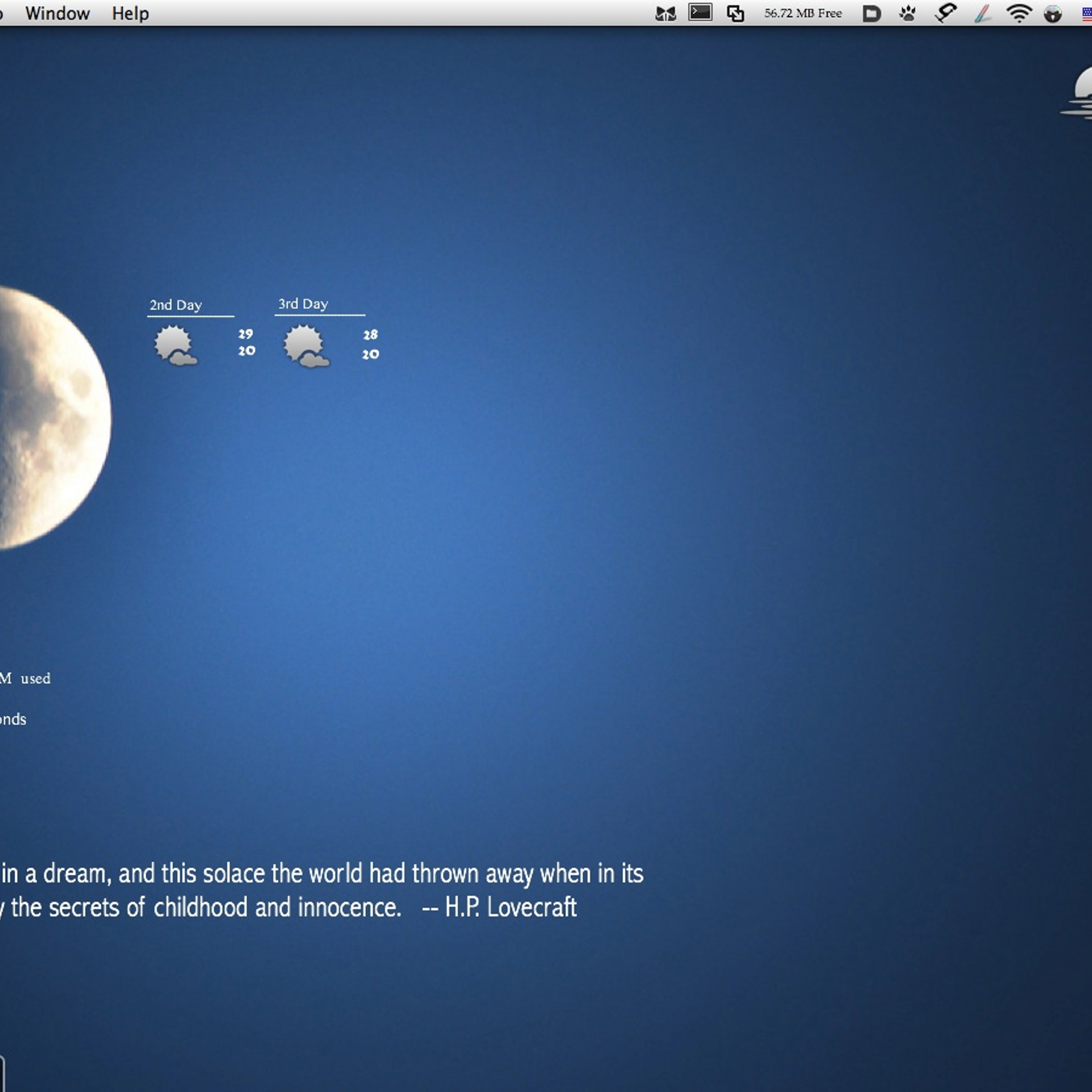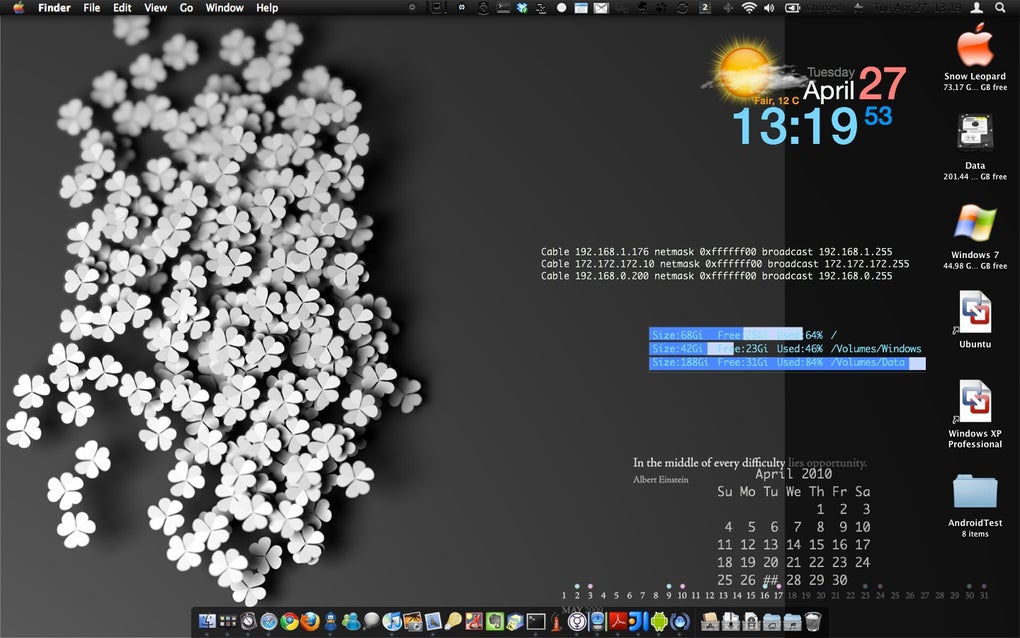Geektool Scripts
No external script paths, just simple shell commands. Tcm forklift parts. I have an air, 10.6.6 and geektool v3 runs horrendously slow. It can take 5 minutes to properly place a window. Just clicking on it in the menu bar takes 3 seconds to pop up. Typing in the size box for example can take 30 seconds. Anyone else having serious lag using it with v3 after adding. The shell script version You’ll need to customize just about every existing step (GeekTool group, wallpaper path, Dock preferences, etc.) and add your own for additional tasks. You could, for example, launch ScreenFlow and hide your other apps.
Geektool Scripts Deutsch
Published on 11 Jan 2010 · Filed in Explanation · 451 words (estimated 3 minutes to read)Geektool Scripts 2019
I’ve been experimenting with GeekTool, a nifty Mac OS X Preference Pane that allows you to display information on your desktop. This information can be static text, images, or the output of a script. The last option is the most useful one, in my opinion, and that’s where I’ve been putting GeekTool to use for me. This isn’t going to be some long post on how to use GeekTool or why you should install it; rather, I just wanted to share a couple of short scripts that I wrote that you might find useful.
I use Mac OS X’s network location support extensively. I have separate locations for home (where I have a proxy server) and when I’m out and about (where there generally is no proxy server). So it’s important for me to be able to tell, quickly, which location is active. If the wrong location is active, then network connectivity is impaired.

To help, I use this command with GeekTool to display the network location on my desktop:
- GeekTool is a great application for OS X that allows you to display the contents of shell scripts, images, and files directly on the desktop. This page provides some scripts that I have written or adapted from others I've found to provide useful information on the desktop with GeekTool.
- Using GeekTool and lsof, you can display an automatically updated list of open network connections directly on a Mac OS X desktop. This is tip is a “safe” alternative to the previously mentioned openports utility.
Note that if you are running as an administrative user on your Mac (which I don’t in order to reduce potential security risks), then the networksetup command I use above will probably behave differently for you. Since I’m not running as an administrative user, networksetup would throw an error at the command line. Thus why I had to redirect STDERR to STDOUT and filter it using tail. Now, a quick F11 to show the desktop and I can immediately see which network location is active.
I also recently added a script to show me what proxy servers are currently active. This is in anticipation of starting my new job at EMC. I don’t know if they have proxy servers on their network, but in the event they do I thought this next command might be handy:
This command displays the HTTP proxy host configured in your network settings. So, again, a quick F11 allows me to see which proxy hosts are configured and active on my Mac.


I actually wrapped several of these commands together into a shell script that you can download here if you’d like. I’m sure there is probably some bash black magic that could produce this output in a more efficient way; feel free to post suggestions for improvement if you have any!
Of course, I also have a few other scripts running with GeekTool—one that displays system information, one that produces IP addresses and Airport (wireless LAN) information, etc.—but these two are probably most useful to me so far.
Metadata and Navigation
Be social and share this post!

Related Posts
- Apparently, I'm Ahead Too21 Oct 2007
- Listing All Unique MailTags Keywords24 Aug 2007
- Listing Unique Projects Used by MailTags23 Aug 2007